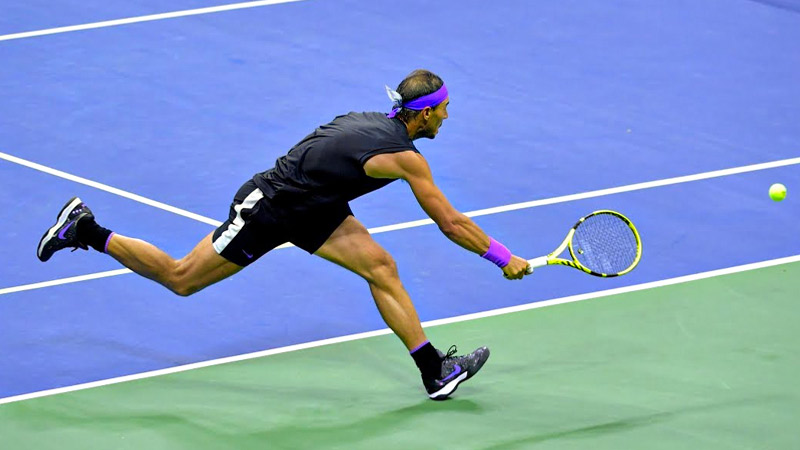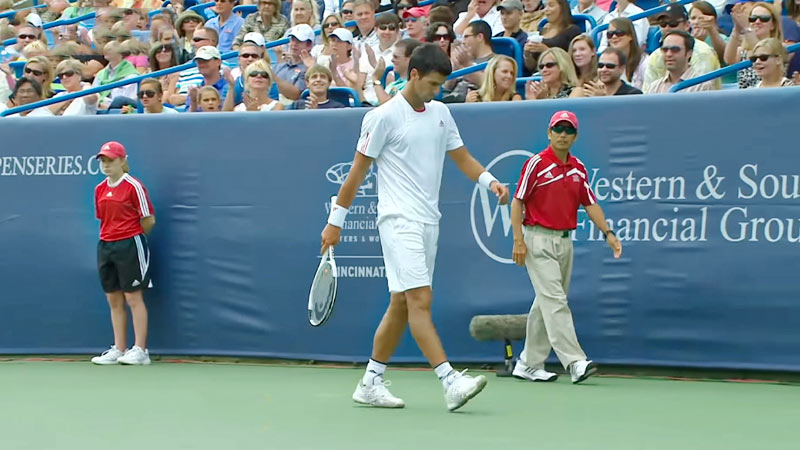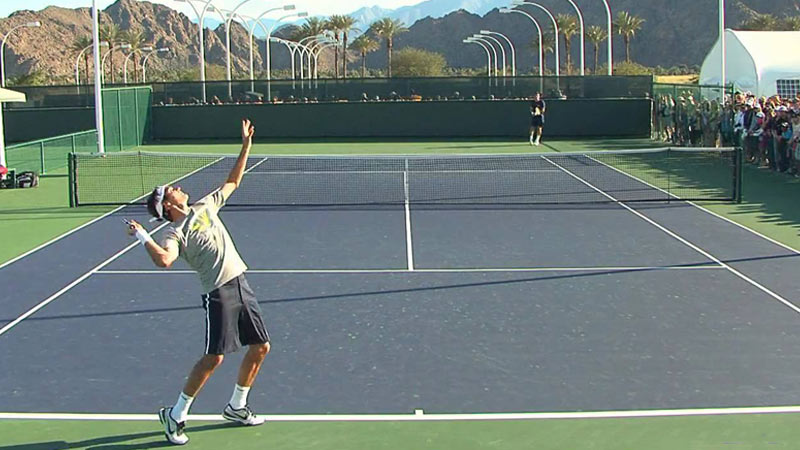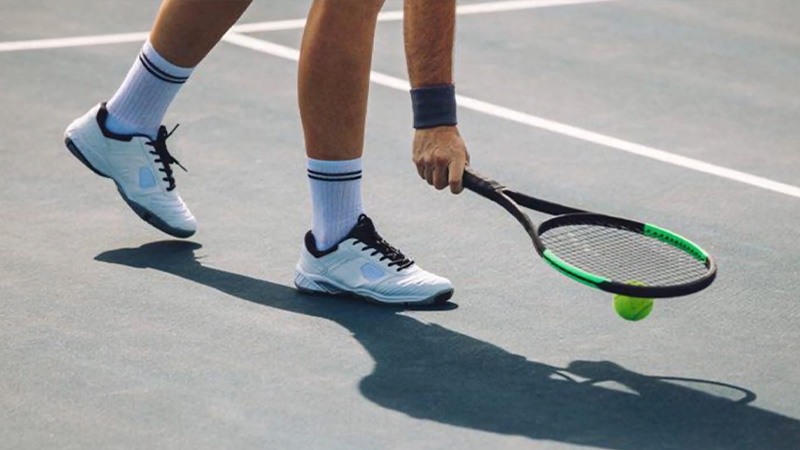The choice of footwear plays a critical role in athletic performance and injury prevention. When it comes to tennis, a sport characterized by swift lateral movements, quick stops and starts, and the need for precise footwork, not all athletic shoes are created equal.
While running shoes are excellent for their intended purpose of providing cushioning and support during forward-motion activities, their suitability for tennis remains a subject of debate.
In this exploration, we will delve into the reasons why running shoes may not be the optimal choice for tennis, considering factors such as lateral support, traction, durability, toe drag resistance, weight, cushioning, and ankle support.
Understanding the differences between these two types of footwear is essential for any aspiring or seasoned tennis player.
What Are Running Shoes?
Running shoes are specialized athletic footwear designed to provide comfort, support, and protection for individuals engaged in running or jogging activities.
These shoes are meticulously engineered to cater to the unique demands of running, offering features such as cushioned midsoles to absorb shock, lightweight construction for agility, breathable uppers for temperature regulation, and various support elements to maintain proper biomechanics.
Running shoes come in a variety of designs, each tailored to specific running styles and terrains, such as road running, trail running, or sprinting.
They play a pivotal role in reducing the risk of injury, enhancing performance, and ensuring a comfortable and enjoyable running experience.
Are Running Shoes Good for Tennis?

No, running shoes are not ideal for tennis. Running shoes are designed specifically for the activity of running, which involves repetitive forward motion and requires cushioning and support to absorb the impact of each stride.
Tennis, on the other hand, is a sport that involves lateral movement, quick changes of direction, and frequent stops and starts.
Here are the reasons why running shoes are not a good option for tennis:
Lack of Lateral Support
Tennis involves rapid side-to-side movements, and the shoes worn need to provide stability during these motions. Running shoes are primarily designed for the repetitive forward motion of running.
While they offer cushioning for heel-to-toe transitions, they lack the necessary reinforcement on the sides to prevent the foot from rolling over during lateral movements, which is a common cause of ankle injuries in tennis.
Traction
Traction is paramount in tennis, where players must accelerate, decelerate, and change direction rapidly.
Tennis shoes feature outsoles with herringbone or modified herringbone patterns that grip the court surface effectively.
Running shoes have different tread patterns more suitable for smooth, even road surfaces, and they may lack the necessary grip on a tennis court, leading to slippage and the potential for accidents.
Durability
Tennis shoes are built with durability in mind, as they need to withstand the abrasive nature of tennis court surfaces.
They often incorporate features such as reinforced toe caps and medial support to extend their lifespan.
Running shoes are not constructed with these reinforced areas and may wear out quickly when subjected to the harsh conditions of a tennis court, compromising their longevity and performance.
Toe Drag
In tennis, players frequently perform a toe drag maneuver, especially when serving or making rapid lateral movements.
Tennis shoes are equipped with durable toe caps to withstand the friction and abrasion that occur during toe drags.
Running shoes do not have these protective features and may get damaged quickly if subjected to such actions.
Weight and Cushioning

Running shoes are generally heavier and offer more cushioning to absorb the impact of repetitive heel-to-toe running on hard surfaces.
While this cushioning is beneficial for runners, it can be a hindrance in tennis, where quick movements and agility are essential.
The lightweight design of tennis shoes allows players to feel the court surface better and respond more swiftly to the game’s demands.
Ankle Support
Tennis shoes often incorporate features like higher collars and extra cushioning around the ankle to protect against lateral movements and prevent ankle injuries.
In contrast, running shoes typically have lower collars and less ankle support, which can leave tennis players more vulnerable to twisting or injuring their ankles during gameplay.
Are Running Shoes and Tennis Shoes the Same?
No, running shoes and tennis shoes are not the same. While they may appear similar at a glance, these two types of athletic footwear are purpose-built for distinct sports and activities.
Here are the key differences between running shoes and tennis shoes through a comparative table:
| Aspect | Running Shoes | Tennis Shoes |
| Lateral Support | Minimal lateral support, designed for forward | Enhanced lateral support to accommodate rapid |
| motion during running. | side-to-side movements in tennis. | |
| Traction | Designed for smooth road surfaces, offering | Specialized outsoles with herringbone or |
| grip in a forward direction. | modified herringbone patterns for optimal | |
| court traction and quick direction changes. | ||
| Durability | Typically have less durability due to lighter | Designed to withstand the abrasive nature of |
| construction and materials. | tennis court surfaces, with reinforced areas. | |
| Toe Drag Resistance | Lack of protective features for toe dragging. | Equipped with durable toe caps to withstand |
| abrasion during toe drag in tennis. | ||
| Weight and Cushioning | Heavier with more cushioning for shock | Lightweight to provide agility and court feel, |
| absorption during running. | with less cushioning. | |
| Ankle Support | Low ankle support and cushioning. | Higher collars and additional ankle support |
| to protect against ankle injuries in tennis. |
What Shoes Will Be Ideal for Tennis?

Choosing the ideal shoes for tennis is crucial for optimizing your performance, minimizing the risk of injury, and ensuring your comfort on the court.
When selecting tennis shoes, consider the following key features that make them ideal for this sport:
Lateral Support
Tennis requires quick lateral movements, and tennis shoes are designed to provide the necessary lateral support.
They often feature a stable upper, sometimes with reinforced sidewalls or straps, to help prevent your foot from rolling over during aggressive lateral motions. This support is essential for avoiding ankle injuries and maintaining stability.
Traction
Tennis shoes are equipped with outsoles designed to offer excellent traction on court surfaces.
The herringbone or modified herringbone tread patterns provide the grip required for rapid changes in direction, ensuring you can stop and pivot effectively without slipping.
Durability
Tennis courts can be harsh on footwear, with abrasive hardcourt surfaces leading to wear and tear. Tennis shoes are built with durability in mind, featuring reinforced areas in high-wear zones.
Look for reinforced toe caps and medial support, which extend the lifespan of your shoes and save you from having to replace them too frequently.
Toe Drag Resistance
In tennis, players often perform a maneuver called a “toe drag” when serving, reaching for low balls, or making quick lateral movements.
Tennis shoes include durable toe caps to withstand friction and protect your shoes from damage during these actions.
Weight and Cushioning
Tennis shoes are designed to be lighter than running shoes. They offer adequate cushioning to provide comfort during matches without compromising agility and responsiveness.
The cushioning is strategically placed to support the unique demands of tennis, such as sudden stops and explosive lateral movements.
Ankle Support
Tennis shoes often have higher collars and additional cushioning around the ankle area. This design helps protect your ankles from potential injuries, especially during fast-paced rallies and quick changes in direction.
Court Feel
Tennis players rely on the feel of the court surface to make precise footwork adjustments. Tennis shoes offer a good court feel, allowing you to read the game and react quickly to your opponent’s shots.
Breathability
Many tennis shoes incorporate breathable materials in the upper to keep your feet cool and comfortable during long matches. Proper ventilation helps wick away sweat and reduces the risk of discomfort and blisters.
Fit
The fit of your tennis shoes is paramount. A snug fit ensures that your feet are secure within the shoes, minimizing the risk of blisters and enhancing your control on the court. It’s essential to try on different sizes and styles to find the best fit for your feet.
Style and Aesthetics
Although not directly related to performance, the style and aesthetics of your tennis shoes can be a personal preference.
Many brands offer a wide variety of designs, colors, and styles, allowing you to choose a pair that matches your taste and complements your tennis attire.
FAQS
Can I wear running shoes for tennis?
It’s not recommended; running shoes lack the lateral support and traction necessary for tennis.
Why do tennis players wear specialized tennis shoes?
Tennis shoes offer features like lateral support, court-specific traction, and durability that enhance performance and reduce injury risk.
Are running shoes suitable for casual tennis matches?
They can be used occasionally, but the lack of lateral support and court traction may limit your performance and increase the risk of injury.
Can tennis shoes be used for running?
While not ideal for running, tennis shoes can work for other sports with lateral movements, like pickleball or volleyball.
Are there shoes designed for both running and tennis?
Some multi-sport shoes exist, but for optimal performance and safety, it’s best to use sport-specific shoes for running and tennis.
To Recap
The debate over whether running shoes are suitable for tennis highlights the importance of choosing the right footwear for a specific sport.
While running shoes excel in providing cushioning for linear motion, their limitations become evident in the context of tennis.
Tennis, with its emphasis on lateral movements, quick stops, and court-specific demands, necessitates a different set of features that are expertly provided by tennis shoes.
The latter offers lateral support, superior traction, durability, toe drag resistance, lightweight agility, and ankle protection.
Ultimately, selecting tennis shoes tailored to the sport’s unique requirements is essential for both performance optimization and injury prevention on the court.







